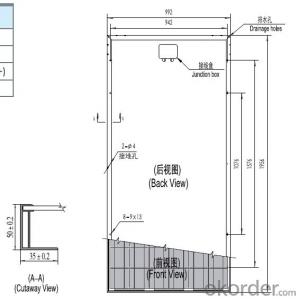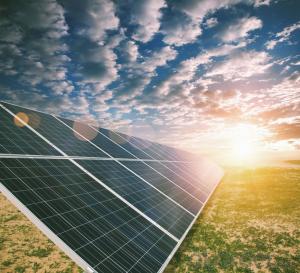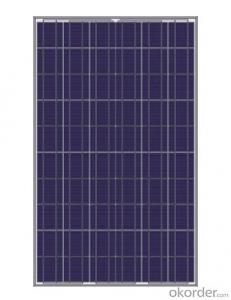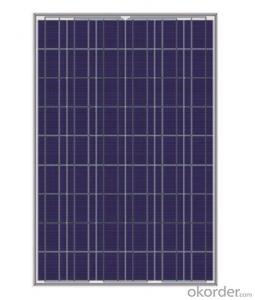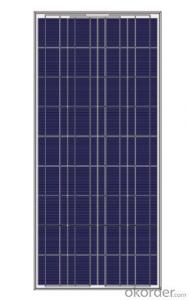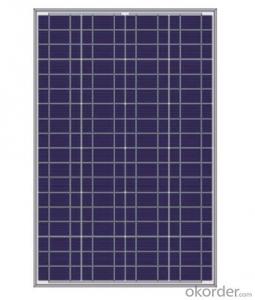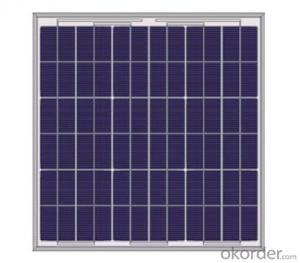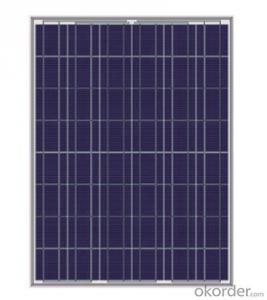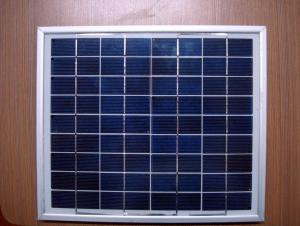Csi Solar Panels - Polycrystalline Silicon Solar Panel Type CR290P-CR250P
- Loading Port:
- Tianjin
- Payment Terms:
- TT or LC
- Min Order Qty:
- 50 pc
- Supply Capability:
- 2000 pc/month
OKorder Service Pledge
OKorder Financial Service
You Might Also Like
1. Structure of Polycrystalline Silicon Solar Panel Type CR290P-CR250P
Solar modules, which are widely used in ground mounted utility-scale PV plants, large-scale and small civil and commercial power generating system such as BIPV combined to the grid, roof-mounted PV power system, rural electrification, communications, emergency auxiliary power.
Solar PV module is comprised of some solar cells which are connected in serial with high efficiency and enhanced reliability.
2.Professional Certificate of Polycrystalline Silicon Solar Panel Type CR290P-CR250P:

3. Main Features of Polycrystalline Silicon Solar Panel Type CR290P-CR250P
High wind-pressure and snow load, and easy installation
Water resistant junction box
Design to meet unique demand of customer
25 year poweroutput warranty
4.Polycrystalline Silicon Solar Panel Type CR290P-CR250P Images
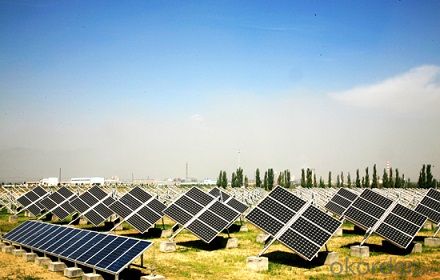
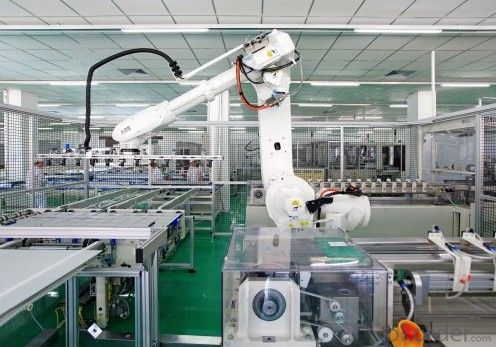
5. Polycrystalline Silicon Solar Panel Type CR290P-CR250P Specification
Module type | CR290P | CR280P | CR270P | CR260P | CR250P |
Cell type | 156mm × 156mm | ||||
No. of cells and connections | 72(6×12) | ||||
Dimension of module (mm) | 1956×992×50 | ||||
Weight of module (kg) | 23.5 | ||||
Maximum Power (Pm) | 290W | 280W | 270W | 260W | 250W |
Open-circuit voltage (Voc) | 44.2V | 44.0V | 44.0V | 43.8V | 43.6V |
Short-circuit current (Isc) | 8.75A | 8.56A | 8.42A | 8.35A | 8.30A |
Volatage at Pmax (Vmp) | 36.2V | 35.8V | 35.4V | 35.0V | 34.4V |
Current at Pmax (Imp) | 8.02A | 7.83A | 7.63A | 7.43A | 7.27A |
Maximum system voltage | 1000VDC | ||||
Operating temperature | -40℃ to +85℃ | ||||
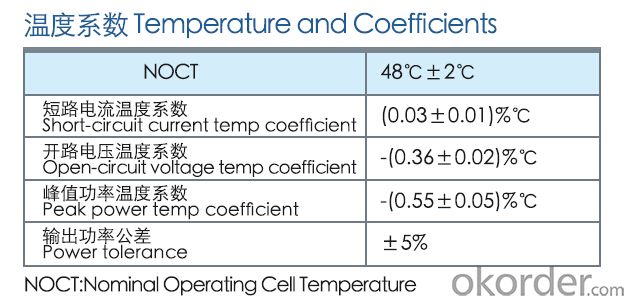
Polycrystalline Silicon Solar Panel Type CR290P-CR250P I-V Characteristics Graph
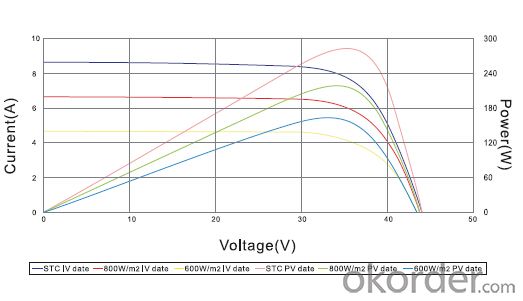
6. FAQ of Polycrystalline Silicon Solar Panel Type CR290P-CR250P
(1) Can you offer the test report of the module?
Sure. All the solar modules must pass necessary tests including EL test and ultra-red test and other visual test of the apperance, and the test report presents all the detailed data of the modules.
(2) How to confirm about the quantity and the type of solar module?
It depends on the solar system where you want to put into use the solar modules. We have experienced engineers to design for your order and you need to give more information to fix the details.
- Q: I need to be able to charge a 2v 7amp battery with a solar panel. I understand that the charge controller will keep the battery from over charging/discharging, but what I don't understand is the amps.The solar panel is rated at 5watts.The solar panel comes with a 2v 3amp charge controller but will I need to buy a 7amp charge controller and replace it with that for my battery pack? Please explain. Thanks in advance.
- In digital circuitry almst anything is viable. Virtually. The changing of voltages and currents is most of the time viable however not constantly effective. Sure it is extremely easy to make use of the 24 volt energy panel to charge a 2V financial institution, offered that the 24 volt supply has the fundamental current potential to hande the load.
- Q: i want to go off grid with solar panels but i need to know how many vots and watts i need to power my house
- you must consider what electrical appliances you want to use, eg. do you have an electric stove? clothes dryer? air conditioner? heater? watts are watts, solar panels are used to create d.c. electricity which is stored in batteries then inverted to a.c. household electricity the d.c. batteries are usually 36 to 48 volts then this is converted to 20 volt a.c. when you figure out the watts being consumed in your household you size your batteries and inverter to these requirements. on your current electric bill you should see a charge for kwh, kilowatt hours= watts in thousands x hours. If you use 25 kwh per month your house is using 35 watts per hour x 720 hours in a month. you would then want sol.ar panels that charge at least 70 watts per hour because roughly half of the day it's dark depending on where you live December is even less of course in the northern hemisphere. Your batteries need to have capacity to hold a days worth of power, batteries are rated in amp hours, amp hours x volts = watt hours. I hope this points you in the right direction. All of this being said be sure to buy your system from a reputable dealer, someone with experience and good references. I am an electrician and have seen systems put in that are completely worthless because they were not sized properly and It sucks to see that someone paid $30k or more for something that is completely useless, it sucks even more when they ask me to help them and I say pay another $30k to up size the system to what they need. Remember you don't get anything for nothing so be prepared to spend money initially and be prepared to be live very energy conscious in your day to day life. Good luck
- Q: In terms of efficiency and cost, what is the best solar panel. I am limited in the number of panels I can put up (probably 6-8) so they must be efficient, but cost is important also.What about these panels that can collect a wider range of light frequency?
- your initial outlay for a solar panel is very large in terms of output.......somewhere around $4 a watt......ie you want a panel that will run a 00 watt lightbulb? $400.00 please. enough panels to collect enough energy to recharge a battery bank to run the house overnight? well, I've been doing a lot of research for my condo project in St Thomas and it comes out to 0-20,000 US $ for a bedroom apartment. Now, after about ten years you have made your investemnt back.... and there are a lot of government rebate programs that lower the cost.. what I have found is solar is nice, but depending on how far north you live you may only have 4 usable hours of light a day. you may very well be better with a wind generator.wind blows all the time after all...Bergy and SouthWest Windpower make two good small home units...start there
- Q: Can I fet free solar panels. This site okorder sells a book that tells how to, but I ordered tha book more then a year a go, and in never came. I even sent them a email a day for more then 3 months and never heard back from them. If anyone knows how to get free pannels, please let me know how. A $300.00 a month bill is slowly killing me.
- If you sent payment via the US mail, report them for fraud. Next, solar panels usually have a high upfront cost for the homeowner - but this is usually offset by a tax refund. The amount of refund varies by area. Check out the cost with a local installer - they have the most motivation to know all the tax breaks you can get. Then save for it, and in the mean time switch your bulbs to fluorescents, unplug your coffee pot, computer, VCR, microwave when off, and see if your energy company provides free insulation evaluation services. And reduce your temperature this winter by 2 degrees, and change that furnace filter.
- Q: If a solar panel (using 36 3x6 solar cells) puts out 60 watts, how many panels would I need (for a house) if I use a max of 2300 kWh in a month? I checked my electric usage for the past 2 years and the kWh is usually lower but I wanted to use the most kWh used (2300) for my question. Thanks!
- One key piece of information missing is the average number of peak sun hours per day. This will vary by location. It is latitude, regional weather, and site shading must be considered. Another consideration is the loses. The 60 watt solar panel is a DC voltage. The 2300 kWh is for the AC power consumed. There are loses in the inverter to change the electricity from DC to AC. There are also loses for wire resistance, soiling of the panels, wire resistance, etc. To work out an example of the math, I'll use 5 peak sun hours and a total efficiency of 80%. The math can be worked out as a single formula but I'll break it into steps for you. (2300 kwh/month)(month/30.4 days) = 75.65 kWh/day (60 W)(5 psh)(80%) = 240 Wh/day = 0.24 kWh/day/panel # of panels needed = Energy use / Energy generated (75.65 kWh/day) / (0.24 kWh/day/panel) = 36 panels.
- Q: Can solar panels be installed in areas with frequent power outages?
- Yes, solar panels can be installed in areas with frequent power outages. In fact, they can be a great solution to overcome the challenges of unreliable power grids. Solar panels generate electricity from sunlight, which means they can operate independently of the grid during power outages. By storing excess energy in batteries, solar panels can provide a reliable and uninterrupted power supply, even in areas prone to frequent outages.
- Q: Can solar panels be installed in a community or neighborhood?
- Yes, solar panels can be installed in a community or neighborhood. In fact, many communities and neighborhoods are increasingly adopting solar energy as a sustainable and clean alternative to traditional power sources. These installations can be done on residential rooftops, community buildings, or even as shared solar projects where multiple households can benefit from a single solar installation. Installing solar panels in a community or neighborhood not only helps reduce carbon emissions but also promotes energy independence and cost savings for residents.
- Q: How much space do solar panels require?
- The space required for solar panels can vary depending on factors such as the size and efficiency of the panels. On average, a typical residential solar panel system can require around 100-400 square feet of roof space per kilowatt of installed capacity. However, advancements in technology have led to the development of more efficient panels that can generate more electricity in less space.
- Q: Polycrystalline solar panels are good or single crystal solar energy is good
- Pre-monocrystalline silicon solar cell photoelectric conversion efficiency of about 15%, the highest reached 24%, which is all types of solar cells in the photoelectric conversion efficiency of the highest, but the production cost is so large that it can not be a large number of extensive And commonly used.
- Q: I was told by a veteran that jcpl had a program that installs free solar systems for disabled vets.If this is true who do i contact?
- yes. there is a free solar panel program for veterans.
Send your message to us
Csi Solar Panels - Polycrystalline Silicon Solar Panel Type CR290P-CR250P
- Loading Port:
- Tianjin
- Payment Terms:
- TT or LC
- Min Order Qty:
- 50 pc
- Supply Capability:
- 2000 pc/month
OKorder Service Pledge
OKorder Financial Service
Similar products
Hot products
Hot Searches
Related keywords

